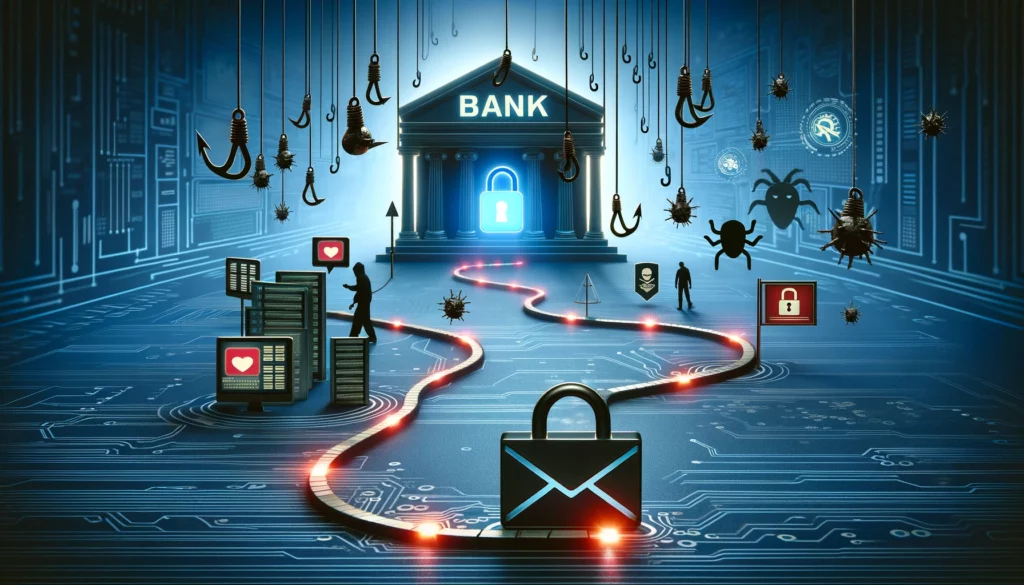The advent of online shopping has transformed the retail landscape, ushering in a new era of convenience and accessibility. With just a few clicks or taps, consumers can browse an extensive array of products, compare prices, and make purchases from the comfort of their homes or on the go. This unprecedented level of convenience has undoubtedly revolutionized the way we shop, offering unparalleled flexibility and choice. However, alongside the numerous benefits of online shopping lurks a shadow of potential risks and vulnerabilities. The digital marketplace is rife with cyber threats, ranging from sophisticated phishing scams and deceptive fake websites to insidious payment fraud and identity theft schemes. These threats pose significant challenges to online shoppers, jeopardizing the security of their sensitive financial information and personal data. In light of these evolving risks, it has become increasingly imperative for consumers to adopt robust cybersecurity measures to safeguard their online transactions and protect themselves from malicious actors. In this article, we will delve into essential tips for safe online shopping, equipping consumers with the knowledge and tools they need to navigate the digital landscape with confidence and security.
- Shop from Reputable Websites: When making online purchases, it’s essential to shop from reputable and trusted websites with secure payment gateways. Look for familiar brands, established retailers, or websites with a reputation for security and reliability. Avoid clicking on links from unsolicited emails or pop-up ads and refrain from shopping on unfamiliar or suspicious websites that lack encryption or a secure checkout process.
- Verify Website Security: Before entering any payment information or personal details, ensure that the website is secure and encrypted. Look for HTTPS:// in the URL address bar, indicating that the website uses SSL/TLS encryption to protect data transmission. Additionally, check for a padlock icon next to the URL, which signifies a secure connection. Avoid entering sensitive information on websites that lack these security indicators.
- Use Strong Passwords: Create strong, unique passwords for your online shopping accounts to prevent unauthorized access and protect against account takeover. Avoid using easily guessable passwords or reusing passwords across multiple accounts. Consider using a reputable password manager to generate and store complex passwords securely.
- Enable Two-Factor Authentication (2FA): Wherever possible, enable two-factor authentication (2FA) for your online shopping accounts to add an extra layer of security. 2FA requires you to provide a second form of verification, such as a code sent to your mobile device, in addition to your password, reducing the risk of unauthorized access even if your password is compromised.
- Beware of Phishing Scams: Stay vigilant for phishing scams targeting online shoppers, where cybercriminals impersonate legitimate companies or retailers to steal personal information or financial data. Be cautious of unsolicited emails, text messages, or social media posts that prompt you to click on links or provide sensitive information. Verify the authenticity of communications by contacting the company directly through official channels.
- Update Security Software: Keep your devices and security software up-to-date with the latest patches and updates to protect against malware, viruses, and other cyber threats. Install reputable antivirus software, enable firewall protection, and regularly scan your device for malware or suspicious activity. Additionally, consider using a virtual private network (VPN) when shopping online to encrypt your internet connection and enhance privacy.
- Review Account Activity: Regularly monitor your bank statements and credit card transactions for any unauthorized charges or suspicious activity. Report any discrepancies to your bank or card issuer immediately to prevent further fraud. Consider setting up account alerts for unusual activity or large transactions to receive notifications in real-time.
- Use Secure Payment Methods: Opt for secure payment methods such as credit cards or digital wallets when making online purchases. Credit cards offer added consumer protections, such as fraud liability limits and chargeback rights, in case of unauthorized transactions. Avoid using debit cards or bank transfers for online shopping, as they may lack the same level of fraud protection.
- Shop Safely on Mobile Devices: If shopping on a mobile device, use reputable shopping apps from trusted sources, such as official app stores. Avoid downloading apps from third-party sources or clicking on links from unsolicited messages. Secure your device with a strong passcode or biometric authentication and enable device encryption to protect sensitive data.
- Educate Yourself: Stay informed about the latest cybersecurity threats and best practices for safe online shopping. Take advantage of resources, articles, and guides provided by reputable cybersecurity organizations to educate yourself about potential risks and how to mitigate them. Share this knowledge with friends and family to help them stay safe while shopping online.
In conclusion, safe online shopping requires proactive measures and informed decision-making to protect against cyber threats and financial fraud. By following these essential tips for secure transactions, consumers can minimize the risk of falling victim to scams, identity theft, or payment fraud while enjoying the convenience of online shopping. Remember to shop from reputable websites, verify website security, use strong passwords and 2FA, beware of phishing scams, keep security software updated, review account activity regularly, use secure payment methods, shop safely on mobile devices, and educate yourself about cybersecurity best practices. With vigilance and caution, you can shop online with confidence and peace of mind.

Penetra Cybersecurity is at the forefront of defending the digital frontier, providing cutting-edge solutions to protect businesses and organizations from the ever-evolving threats of the cyber world. Established with a mission to create a safer internet for everyone, Penetra leverages a blend of advanced technology, expert knowledge, and proactive strategies to stay ahead of cybercriminals.
Ready to take the next step towards a more secure future? Schedule a consultation with us today and discover how we can help protect what matters most to you. Don’t wait until it’s too late—with Penetra Cybersecurity, your business isn’t just secure; it’s imPenetrable.




